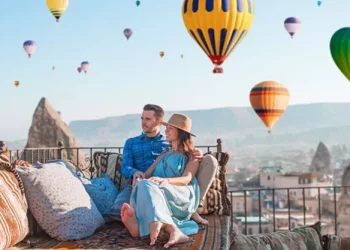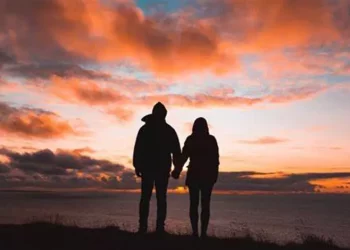Love is one of the deepest and most universal human experiences, but it means something different to each person. It’s not just a feeling, it’s an action, a choice, and a way of being. But what does love look like to you? Is it a warm hug, kind words, or an act of selflessness? This article explores the many facets of love and helps you reflect on how you experience and express love in your own life. By the end, you’ll have a deeper understanding of what love really means and how it affects your relationships.
Love is personal and unique
No two people’s love is the same
Love is very personal. What is like love to one person may not resonate with another. For some, love is about grand gestures and moments of passion. For others, it is found in quiet daily acts of care and commitment. There’s no right or wrong way to experience love – it all depends on what feels real to you.
Shaped by your experiences
Your understanding of love is shaped by your life experiences, upbringing, and relationships. If you grew up in a family that expresses love through acts of service, you may associate love with helping others. If your first love was passionate and intense, you may see love as a whirlwind of emotions. Reflecting on these influences can help you understand your unique perspective on love.
The multifaceted nature of love
Romantic love
When we think of love, romantic love is often the first thing that comes to mind. It’s the butterfly in your belly, the desire to be close to someone, and to share the joy of life with them. But romantic love is not just about passion, it’s also about partnership, trust, and mutual respect.
What it looks like: holding hands, sharing dreams, supporting each other in challenges, and creating life together.
How it feels: Deep connection, security, and the excitement of building something meaningful.
Family love
Family love is the bond we share with our family. It is often unconditional, rooted in a sense of belonging and a shared history. This type of love can be complicated, but it is also very powerful.
What it looks like: family dinners, celebrating milestones together, and supporting each other no matter what.
How it feels: A sense of security, loyalty, and the comfort of knowing you’re never alone.
Platonic love
Platonic love is the love we share with our friends. It is built on mutual respect, mutual interests, and emotional support. Friends are the family we choose, and this type of love can be as deep and meaningful as romance or family love.
What it looks like: late-night conversations, inside jokes, being each other’s cheerleaders.
How it feels: acceptance, joy, and freedom to be yourself.
narcissism
Self-love is the foundation of all other types of love. It’s about valuing yourself, being kind to yourself, and recognizing your worth. Without self-love, it is difficult to give or receive the love of others completely.
What it looks like: Set boundaries, practice self-care, celebrate your accomplishments.
How it feels: Confidence, peace, and deep self-esteem.
How do you experience love?
The five languages of love
Dr. Gary Chapman’s concept of the five languages of love can help you understand how you prefer to give and receive love.
These languages are:
- Affirmative Words – You feel loved by verbally expressing love, such as praise and encouragement.
- Acts of Service – You feel loved when someone does something considerate or helpful for you.
- Receiving Gifts – When someone gives you a meaningful gift, you feel loved.
- Quality Time – You feel loved when someone spends inseparable, meaningful time with you.
- Physical contact – You feel love through physical affection, such as hugging, holding hands, or hugging.
Knowing your love language can help you express your own needs and recognize how others express their love for you.
Emotional love and practical love
Some people see love as an emotional connection – feeling understood, valued and cherished. Others experience love through action – someone being there for them, helping them, or taking care of their needs. Both are valid and important, and they often complement each other in healthy relationships.
What Does Love Look Like in Action?
Small, Consistent Acts
Love isn’t always about grand gestures. Often, it’s the small, consistent acts of care that mean the most. It’s your partner making you coffee in the morning, your friend remembering your favorite song, or your sibling calling to check in on you. These moments might seem simple, but they’re powerful expressions of love.
Being Present
One of the most meaningful ways to show love is by being fully present. Put away your phone, listen actively, and give your undivided attention. Being present shows the other person that they matter to you.
Supporting Growth
Love isn’t just about making someone feel good—it’s also about supporting their growth. This might mean encouraging them to pursue their dreams, challenging them to be their best self, or standing by them during tough times.
Love in Challenging Times
Love as a Choice
Love isn’t always easy. There are times when it requires patience, forgiveness, and effort. Choosing to love someone, even when it’s hard, is one of the most powerful expressions of love.
Love During Conflict
Conflict is a natural part of any relationship, but it doesn’t have to diminish love. In fact, navigating conflict with respect and empathy can strengthen your bond. Love during conflict looks like listening without judgment, apologizing when you’re wrong, and working together to find solutions.
Love in Loss
Love is especially evident during times of loss or hardship. It’s the friend who sits with you in silence, the partner who holds you while you cry, or the family member who shows up when you need them most. These moments reveal the depth and resilience of love.
How to Cultivate Love in Your Life
Practice Gratitude
Gratitude is a powerful way to cultivate love. Take time to appreciate the people who love you and the ways they show it. Express your gratitude through words, actions, or small gestures.
Communicate Openly
Open communication is essential for love to thrive. Share your feelings, needs, and desires with the people you care about. Encourage them to do the same.
Show Up Consistently
Love is built through consistent actions. Show up for the people you love, even when it’s inconvenient. Be reliable, dependable, and present in their lives.
What Does Love Look Like to You?
Reflect on Your Experiences
Take a moment to reflect on your own experiences of love. What moments have made you feel most loved? How do you prefer to express love to others? Journaling or talking with a trusted friend can help you gain clarity.
Define Love for Yourself
Love doesn’t have to fit into a specific mold. Define what love means to you, based on your values, needs, and experiences. Your definition might evolve over time, and that’s okay.
Embrace the Diversity of Love
Love is diverse and multifaceted. It can be passionate, quiet, fierce, gentle, or anything in between. Embrace the many ways love shows up in your life, and celebrate its richness.
Conclusion
Love is one of the most powerful forces in the world, but it’s also deeply personal. What love looks like to you might be different from what it looks like to someone else—and that’s beautiful. By reflecting on your own experiences and understanding how you give and receive love, you can create deeper, more meaningful connections with the people in your life. So, what does love look like to you? Take a moment to think about it, and let that vision guide you in your relationships and beyond.
This article explores the many dimensions of love, encouraging readers to reflect on their own experiences and definitions. Love is not a one-size-fits-all concept—it’s as unique as you are. By understanding what love looks like to you, you can cultivate stronger, more fulfilling relationships and live a life filled with connection and meaning.
Related topics:
What Does Deep Love Feel Like?
How To Know When He Really Loves You?
How To Know Someone Cares About You?





























